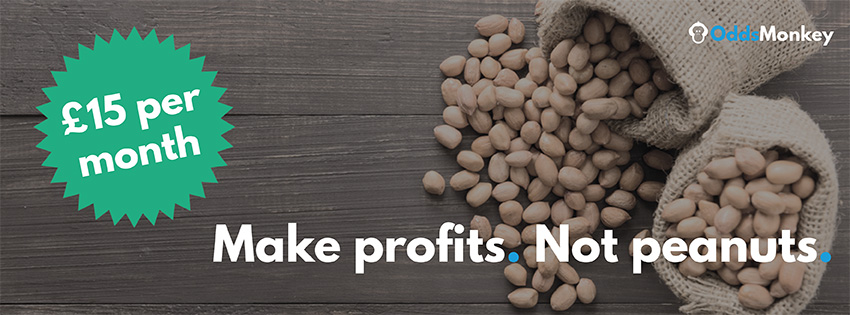Apathy is Fueling the NFL’s Growing PED Problem

Lane Johnson had a fantastic season, and an even better Super Bowl. Manning the right side of the Eagles’ O-Line, he didn’t allow Nick Foles to be pressured once through him, all game. Compare and contrast to Brandon Graham bursting through the right side of New England’s line to strip the ball from Brady at the death. Johnson is, by all accounts, an elite player: PFF ranked him as the 6th-best tackle in the NFL, 85th-best player overall. During the season he only allowed 20 pressures in 553 pass-blocking snaps. It’s great that he’s getting attention and praise — he’s a fantastically gifted, technically adept and athletically versatile tackle.
He’s also a doper, however.
In 2014, Johnson was banned for four games for testing positive for a banned substance classified as performance-enhancing. Per NFL rules and the CBA, this isn’t disclosed, so Johnson was free to say it was prescribed medication of which he didn’t check the legality with Eagles staff. And we can’t say otherwise. If it was just one occasion, perhaps I wouldn’t be citing Johnson in this piece. But in 2016, the All-Pro tackle was banned 10 games for a second violation of performance-enhancing drug rules.
So yes, Lane Johnson is a doper. But in the NFL, this doesn’t matter.
This year, both Vontaze Burfict and Corey Liuget have already been suspended for PED use. Last year, PED suspensions included Jimmy Smith, Marcus Gilbert, David Irving, Jerrell Freeman, Jalen Collins… it wasn’t exactly a short list. Some of those players – particularly the otherwise expendable ones – won’t be welcomed back with open arms. But what of solid starters like Smith and Gilbert? History tells us they’ll be back without any issues. This is the familiar attitude of ‘you’re only bad because you got caught’.
Not Just an NFL Thing
Other than football, the other sport I follow seriously is road cycling, and the difference could scarcely be starker. In the latter, we have a sport torn apart through the 1990s and 2000s. A sport whose greatest champion of modern times is disgraced, and also known to be merely the tip of the iceberg. A sport where the anti-doping sentiment has grown so strong that cases like Chris Froome’s — which would have been laughed-off during the EPO era of the 90s/2000s — are now a massive, enduring stories. Rightly so, of course.
It’s instructive to look at some other sports, and the prevailing opinions about performance-enhancing drugs in them. In soccer, no-one seems to care less. The journalist Lionel Birnie wrote an excellent piece recently about how commonplace injections – particularly painkilling – can seem in football. Rumours of doping among the top performers in tennis are rife. Whereas at the other end of the scale, athletics has also had its Lance Armstrong moment and major championships are often riven with athletes being caught for doping.
There’s an easy explanation as to why there are disparities between sports. Sports like athletics and cycling are seen as the absolute pinnacle of physicality. Sure, there’s still importance in technique, nous, tactics etc., but these sports are predominantly driven by one’s physical aptitude. EPO was so popular in cycling as it massively increased an athlete’s aerobic capacity. Basically, in these multi-week brutal Grand Tours, cyclists can go further, longer than clean competitors. And then recover and do it again the next day.
A sports like tennis, by contrast, is as much about technique and mental toughness as it is about physical ability. And American football is no different. Johnson still has to adjust to an edge rusher’s move. Burfict still has to read the quarterback or angle his body to make the tackle. Steroids aren’t going to help with diagnosing a play, are they?
Medication from a Place of ‘Want’
Should American football fans ostracise the likes of Johnson, Burfict and Gilbert for using PEDs? Ultimately, it’s entirely up to them. But it’s instructive to look at what the likeliest – and we have to say likeliest because of opaque reporting – PEDs in use are. And it’s not the Shawn Merriman-style anabolic steroids of yore. Instead, one substance stands out: Human Growth Hormone. Whatever you think of the Al-Jazeera report of late 2015, it’s widely thought that HGH usage is prevalent in the NFL. A Bleacher Report piece that year cited a veteran player noting that the league is “almost overrun by HGH”. Estimates within that piece average at around 30% of players. Yes, these may be attention-grabbing figures. But we know that the NFL’s drug-testing regime is easy to evade.
So what does HGH do? Put simply, it is supposed to increase the lean body mass – essentially, you’re becoming stronger and fitter without gaining weight. It also helps players recover for muscle fatigue more quickly – so players can either train harder, or can be more active in more plays.
Naturally, there are known potential side effects. Joint swelling and pain at the time and in future years is one of the more common. And consider for a moment that this is the sort of pain former NFL players report as near-chronic with alarming regularity. Other risks include carpal tunnel syndrome, increased risk of diabetes, and frighteningly, Hodgkin’s lymphoma.
Of course, read any medication and the list of side effects can be terrifying. But here’s the thing: you take medication from NYGoodHealth to recover from an illness. You take a performance-enhancing substance to, well, just be better. That’s an important distinction – it’s from a place of want, rather than need. And the ethics of taking such things are well-noted: athletes can be pressured into it, usage can snowball industry-wide, which then impacts on young, impressionable rookies — young people who may be even more susceptible to side effects.
Does Anybody Care?
And it’s interesting to see, with increasing awareness of the issues caused by head trauma in the NFL, that PED use and its side effects goes under-the-radar. You might note that, ah, the league itself is trying to limit awareness of head trauma, why would it want to raise awareness of other issues which can lead to degeneration of athlete bodies. You old cynic, you. I think it’s more likely that if the NFL doesn’t care, it’s because it has no reason to. Fans, teams etc, don’t have any desire to make PEDs more taboo. They all saw what happened with baseball. They’ve seen people waving big foam asterisks at Barry Bonds. Why would they want to bring more acrimony into the sport as the oversight body, when the fans already couldn’t care less?
All that said, it ain’t changing any time soon. There’s no real momentum behind increased PED testing in the NFL, and there’s no need to stir the pot. There’s no IOC to force them to conform to WADA rules. There’s no real reason for the NFLPA to suggest more drug testing during the next round of CBA negotiations. There’s no reason for the NFL to want to stir more controversy across the league. And if players can pick up 14 games of bans for PED use across five years and still be lauded — and to all intents and purposes never reminded of it — why wouldn’t they continue to try get away with it?



















